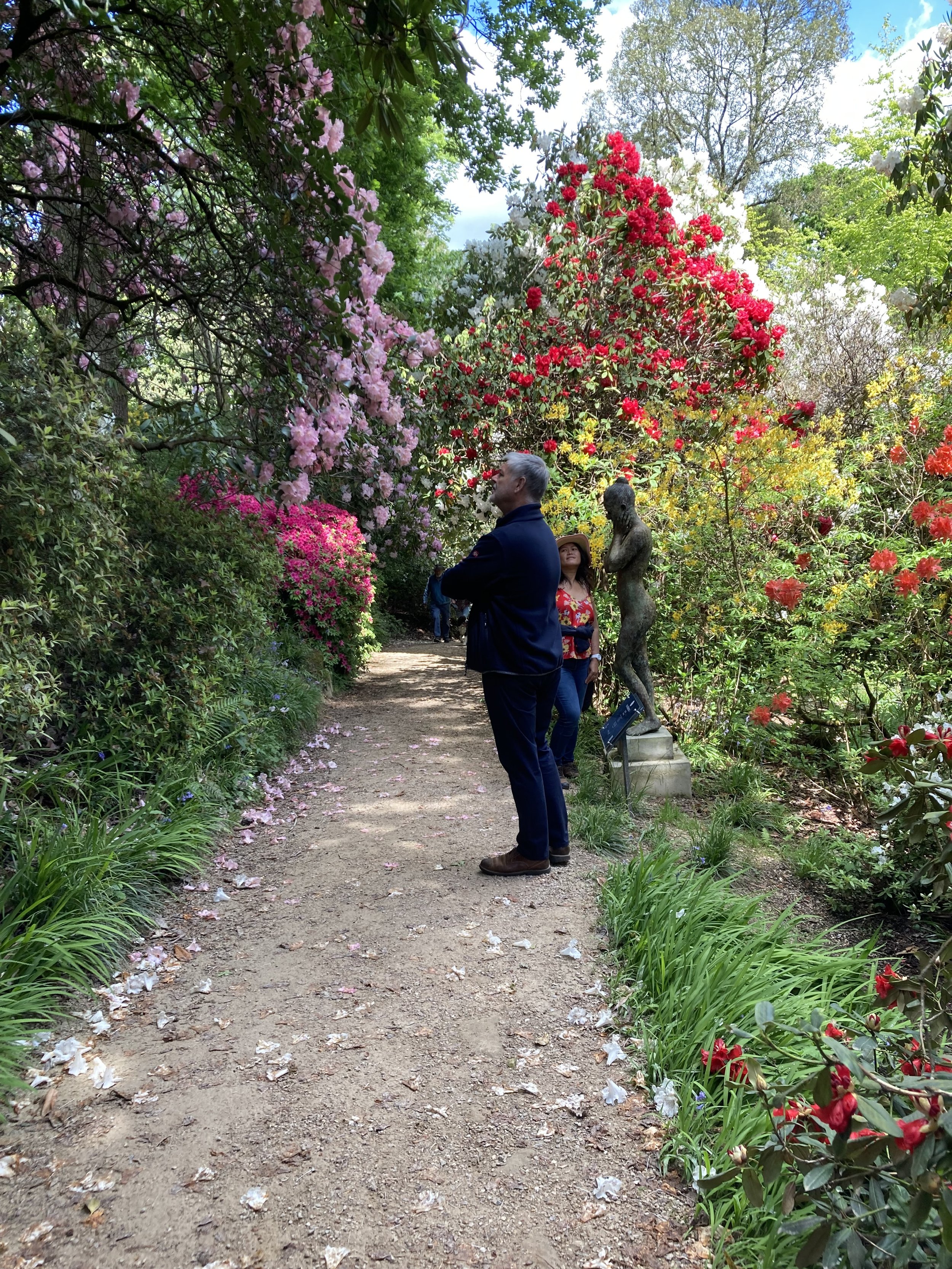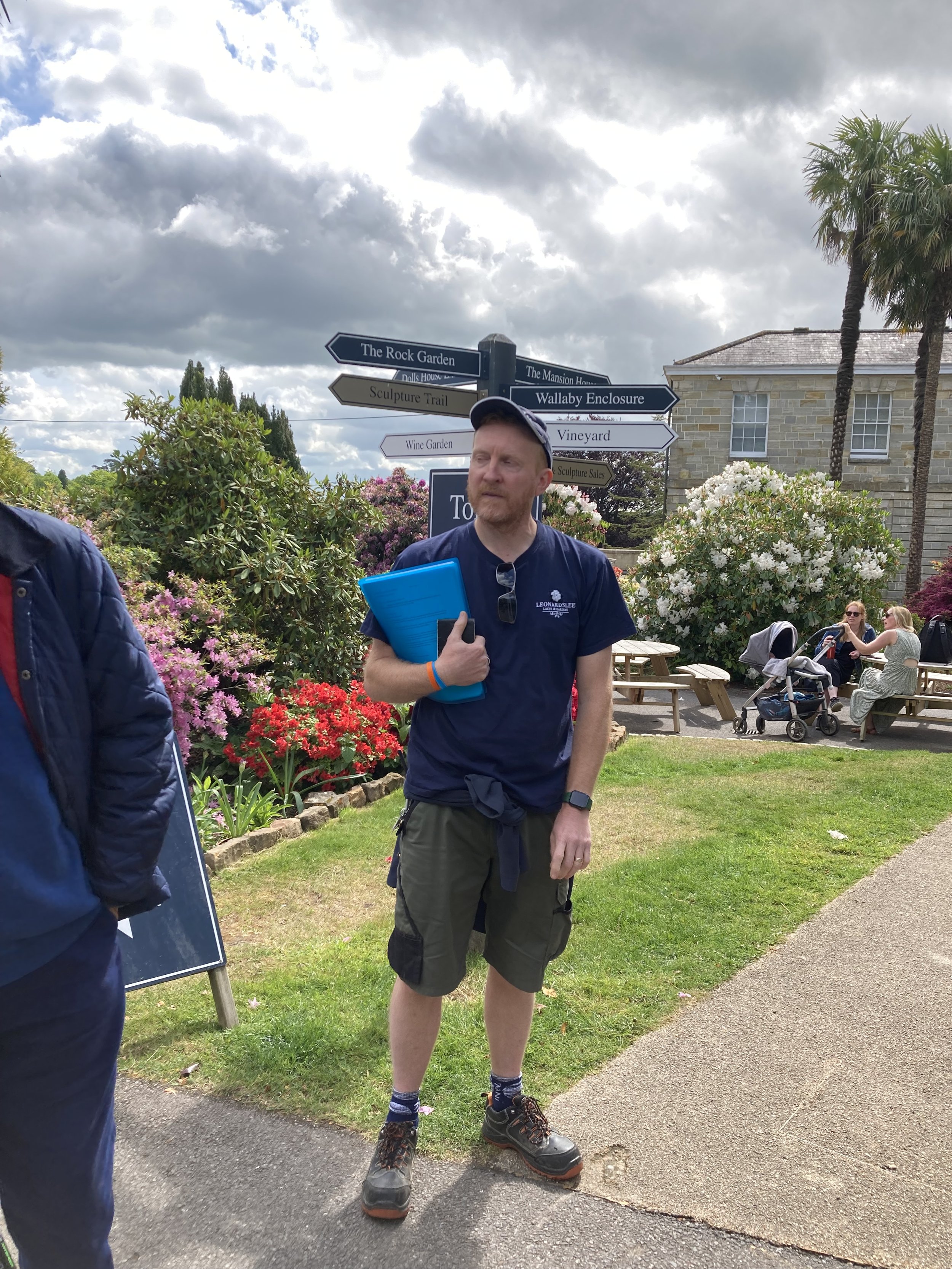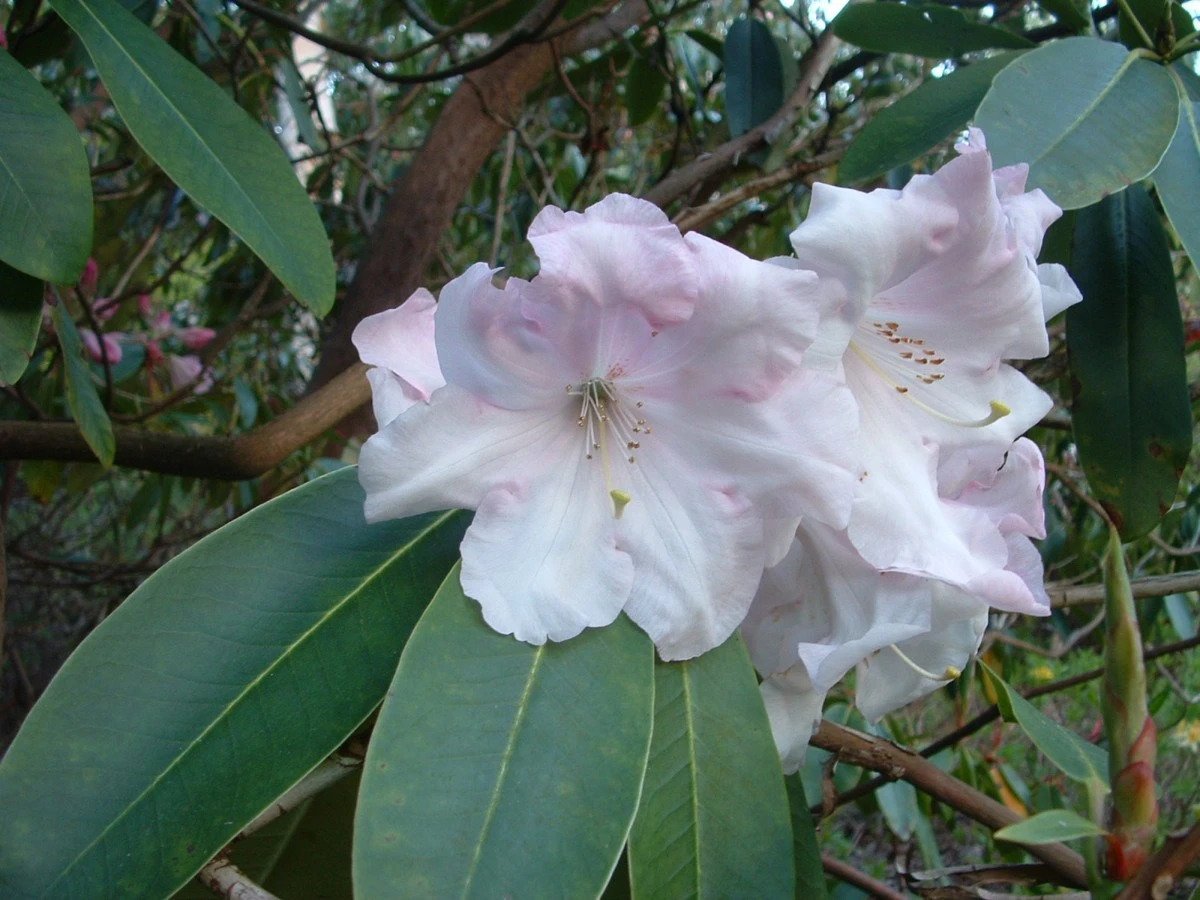Garden New | May 2025
The weather really kept us on out toes during April. It was certainly a very dry month which threw up a few issues considering we’d spent quite a bit of time during March and early April sowing grass seed and planting trees and shrubs throughout the garden. There were days when the temperatures were almost Summeresque with readings of 22 recorded in the garden (and up to 39C in our polytunnels) while at night we were still getting frosts and measurements of zero degrees. All of this has probably confused many of our precious plants here at Leonardslee, not knowing whether they’re coming or going. The garden has certainly been full of colour during April which you cannot failed to have noticed if you visited us last month. We’re not drastically ahead of schedule though, as we were in 2024, so May looks set to reach its customary peak in terms of colour, scent and drama throughout the whole estate.
One of the first points of call during May;
Should be The Loderi Garden. The plants growing there are the reason why Leonardslee is World famous and why people travel for miles to come and see us, so that should be on everyone’s visiting list this month. As you walk the myriad of paths that meander toward The Dell through this part of the garden you’ll be stopped in your tracks by the sheer range of colours, the gorgeous scents and the sheer scale of the Rhododendrons and Azaleas blooming away in here during May. Some of my favourites include the deep, glossy red of Rhododendron ‘Oporto’ for instance or the unusual parma violet-coloured ‘Saint Tudy’. However, the real stars of the show here are the Loderi hybrids. Often cited as the finest Rhododendron hybrid collection ever created, these are termed as ‘glamour’ Rhododendrons, and for good reason. Back in 1901, twelve years after purchasing Leonardslee, Sir Edmund Loder started to breed his collection. He took the pollen from a R. griffithianum sourced from his friend Colonel Godman’s glasshouse across the road at South Lodge and combined that with the female flower parts of his own R. fortunei, and the rest is history. In truth, it took six years for his first cross to flower but he eventually created over 30 Loderi hybrids, some of which didn’t flower until after he sadly passed away in 1920. The griffithianum parentage provided the large flowers and attractive bark that you see on the plants today while the fortunei genes gave their delicious scent, hardiness and tree-like growth. Incidentally, the scent of a Loderi rhodie in full bloom has to be my most favourite smell in the whole World! Make sure you grab a nose-full when you’re next passing one!
Today, Leonardslee is the only place where you can find a complete collection of Loderi hybrid Rhododendrons and the original specimens truly are a sight to behold.
Incidentally, Sir Giles Loder (Edmund’s Grandson) planted the Coronation Garden up on the eastern slopes from Leucothoe Pond with another collection of these hybrids, to mark the coronation of Queen Elizabeth II in 1952. If you miss the original Loderi hybrids flowering in early May, the younger specimens in the Coronation Garden are usually slightly behind their siblings and will flower a little later.
These Loderi hybrids, together with many other Rhododendrons bred here at Leonardslee by generations of the Loder family, form part of our Plant Heritage National Collection. Look out for signs and further information on some of the key specimens throughout the garden and see how many you can spot. Some of my favourites include ‘Leonardslee Primrose’ near Clapper Pond for example and which was introduced by Lady Loder after Sir Edmund’s passing and ‘Loderi Georgette’ which is the pinkest of all the Loderis and can be found near the wallabies. ‘Leonardslee Primrose’ won the Plant Heritage Threatened Plant of the Year public vote last year and it started to flower in mid-April so catch it while you can. Some of the other plants within our collection that have started blooming include ‘Seamew’ and ‘Pink Glory’ near Camellia Walk and ‘Prince Charming’ on the path from the Play Area for instance.
Talking of rhododendrons and camellias, we recently entered the RHS Early Spring flower show at Wisley and had another successful experience. We won 2 trophies, the John Hilliard Cup and the South East RCM Cup, as well as 18 individual awards including three first prizes. This was a great reward for all the hard work that my team put in on this process.
The next flower show that we’ll be attending will be held here at Leonardslee when the RHS RCM Group hold their annual AGM and Centenary Cup event here on May 31st so why not come along and see the displays in the Courtyard building?
While you’re in the Loderi Garden, make sure you try and find our Diabelia spathulata shrub along Middle Walk. Covered in drooping bell-like white flowers, it has an interesting history. Although relatively common in Southern Japan, when it was introduced to the UK in 1880 it proved difficult to keep alive and Leonardslee is now one of only two known locations of this plant in the whole of the British Isles.
Another unique and fascinating part of the garden that you really cannot afford to miss in May is of course the Rock Garden. The first part of the garden to be created by Sir Edmund Loder once he purchased the estate and constructed by Pulham & Sons (the Royal-approved Chelsea designers of their day), this area really is an oasis in May. We started to carry out some restoration investigations on the Pulhamite rock structures in here during part of April but it’s now open again just in time for the big display in there. The cloud-pruned Azaleas will be in full bloom this month and perfectly complimented by the emerging Acer foliage above and splashes of newly planted alpines, ferns and herbaceous perennials beneath. With the trickle of the waterfall and the birds and insects flitting merrily about, this is a perfect place to get lost and experience true serenity. Some particular May highlights in there include the Exochorda macrantha near the pond for example with its clusters of sweet white blooms, the acid green foliage of the British & Irish Champion Acer palmatum ‘Seiryu’ up on the Eastern ridge or the stunning orange hairy indumentum on the underside of the Rhododendron pachysanthum leaves down on the main path.
To the north of Camellia Grove lie the Bluebell Banks. Aptly named, these slopes on the west side of the lakes are covered in floral rivers of Hyacinthoides non-scripta, or Bluebells to you and me, in May. Delicately scented and a true sign of Spring, bluebells are also a key indicator species for ancient woodland areas like Leonardslee. We hope that this year will be a great one for bluebells again and you can also spot them up at the north end of lakes where they congregate with wood anemones and spring primroses.
While you’re enjoying all that the garden has to offer during May, the garden team will be busying themselves away with plenty of important tasks. The likes of turf care will become more frequent as temperatures and daylight hours increase so we’ll be making good use of out lawn mowers and edging shears this month. We’ll also be continuing with key planting projects before the weather becomes too hot and dry for young plants to tolerate, so look out for new plants popping up in and around the Herbaceous beds and in the borders around the house too. Just as our ornamental plants will be putting on a growth spurt in May, so too will the weeds so we’ll be down on our hands and knees in the formal beds and borders again this month. That also applies to pond weeds too so we’ll be manually clearing emerging duck weed from the lakes in May, first leaving it on the side of the water for any aquatic insects to safely return to the water.










There are plenty of garden tours during May too. I’ll be giving a Head Gardener tour on the 14th while our volunteer-led garden tours run on the 12th and 21st.
I hope you’re as excited as I am to experience Leonardslee in the month of May again this year. It really should be a sight to behold. Have a great month and I look forward to seeing you here in the garden again very soon.
Jamie Harris
Head Gardener







